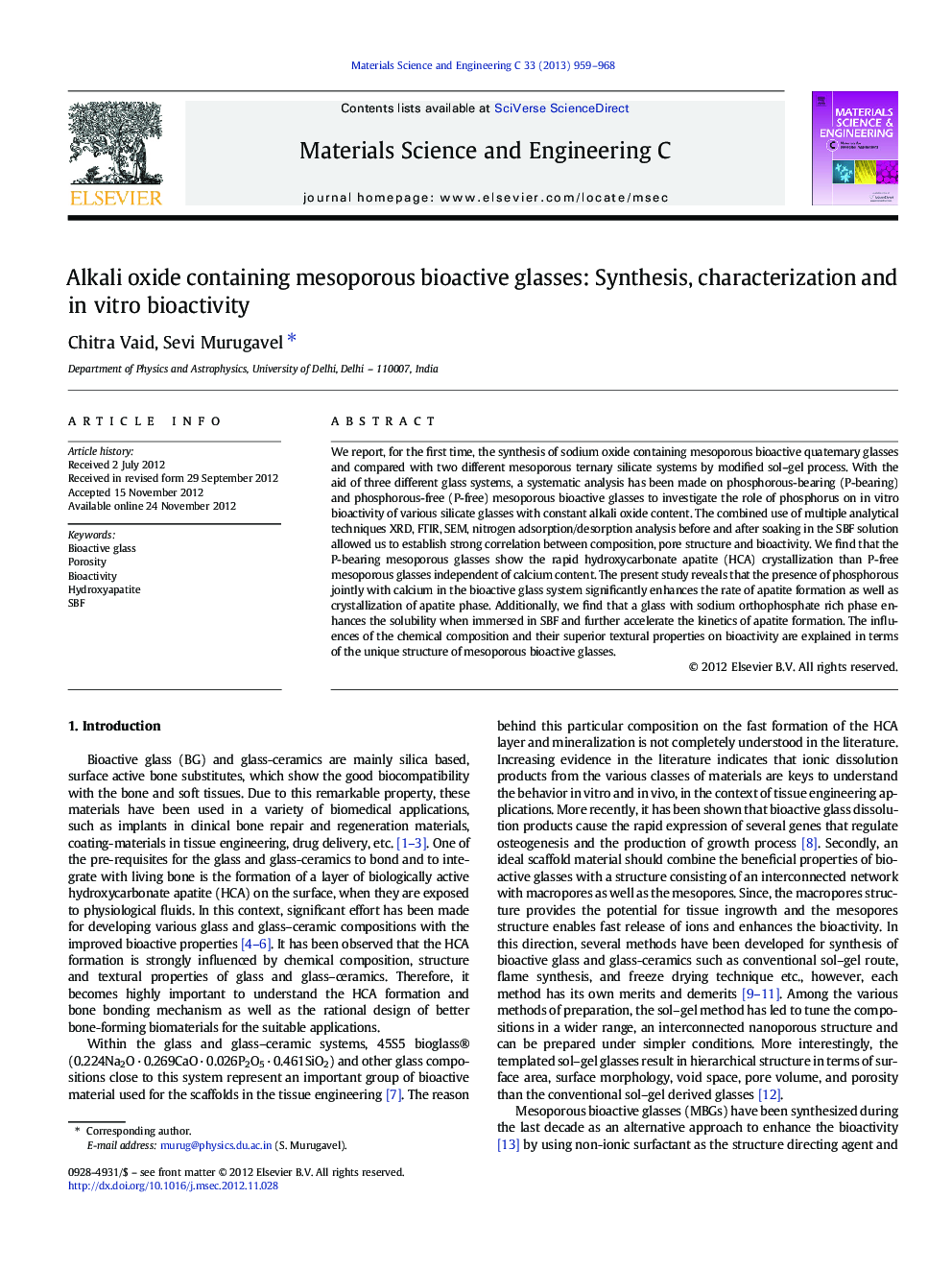| Article ID | Journal | Published Year | Pages | File Type |
|---|---|---|---|---|
| 1428906 | Materials Science and Engineering: C | 2013 | 10 Pages |
We report, for the first time, the synthesis of sodium oxide containing mesoporous bioactive quaternary glasses and compared with two different mesoporous ternary silicate systems by modified sol–gel process. With the aid of three different glass systems, a systematic analysis has been made on phosphorous-bearing (P-bearing) and phosphorous-free (P-free) mesoporous bioactive glasses to investigate the role of phosphorus on in vitro bioactivity of various silicate glasses with constant alkali oxide content. The combined use of multiple analytical techniques XRD, FTIR, SEM, nitrogen adsorption/desorption analysis before and after soaking in the SBF solution allowed us to establish strong correlation between composition, pore structure and bioactivity. We find that the P-bearing mesoporous glasses show the rapid hydroxycarbonate apatite (HCA) crystallization than P-free mesoporous glasses independent of calcium content. The present study reveals that the presence of phosphorous jointly with calcium in the bioactive glass system significantly enhances the rate of apatite formation as well as crystallization of apatite phase. Additionally, we find that a glass with sodium orthophosphate rich phase enhances the solubility when immersed in SBF and further accelerate the kinetics of apatite formation. The influences of the chemical composition and their superior textural properties on bioactivity are explained in terms of the unique structure of mesoporous bioactive glasses.
Graphical abstractFigure optionsDownload full-size imageDownload as PowerPoint slideHighlights► New method for the synthesis of alkali-alkaline earth oxide based bioactive glasses by sol–gel process. ► Mesoporous bioactive glasses with tunable textural properties. ► Chemical composition and textural properties greatly influence the bioactivity. ► The high surface area and silanol density leads to the enhanced apatite formation ability. ► Structure–property correlations in the apatite formation
